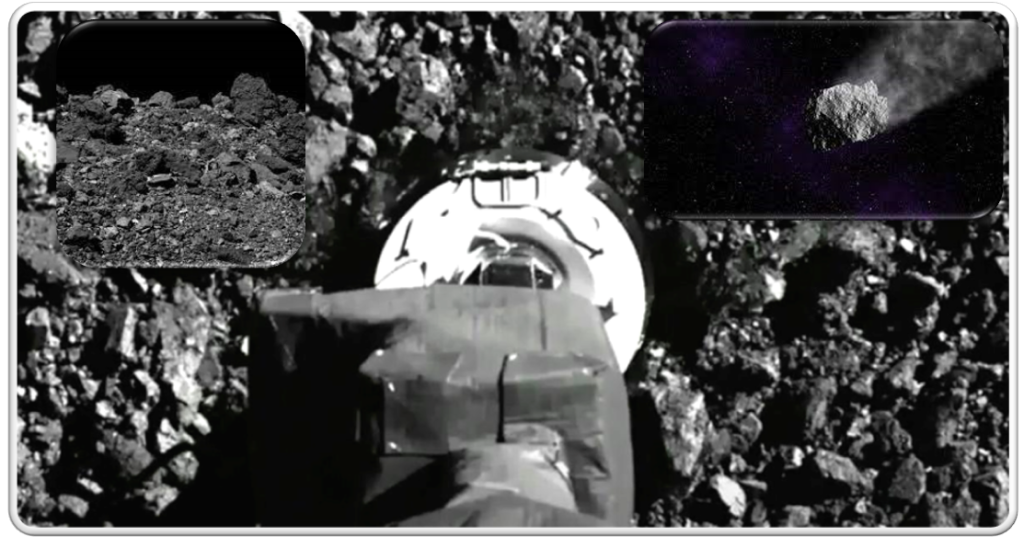Asteroid fragments could tell us about the early days of the 4.5 billion-year-old solar system and the possible origins of our planet’s water expected to fall in the desert Utah on Sunday.

A NASA mission called OSIRIS-REx has been in the works for more than a decade. Its goal is to retrieve a large amount of rock and dust from a near-Earth asteroid called Bennu and bring it to our planet for study. The spacecraft was successful in 2020 and this weekend it will finally pass by Earth and release a capsule containing the sample and send it to Utah.“Of course, this is the moment we have all been waiting for,” said Lori Glaze, director of the Planetary Science Division of NASA’s Science Mission Directorate.
This sample will help scientists better understand the materials present during the early formation of our solar system. Researchers believe that asteroids like Bennu have not changed much since our region of the universe came into being. They plan to study the recovered rocks and use the mission to inform future expeditions.
“We think asteroids could be the source not only of the rocky parts of our planet but also of the water that makes up our hydrological system,” Glaze said.
Scientists are not sure how many samples are in the container, but suspect it is the largest amount ever collected from an asteroid, weighing about 250 grams, about as heavy as a hamster. This will give them more rocks to analyze than ever before.
OSIRIS-REx removed more rock and material than expected, to the point that it blocked the spacecraft’s sample collector and some of it was thrown into space. NASA decided not to measure the sample and quickly put the rocks away for safekeeping.
The spacecraft left Bennu with the sample in 2021 and has been on its way to Earth since then.On Sunday morning, OSIRIS-REx will come within 63,000 miles of Earth, as the final leg of its journey begins, and not without risks.
First, the probe releases the sample container (roughly the size of a tire) into space. If the container doesn’t jettison as planned and gets stuck inside the OSIRIS-REx spacecraft, the team will have to wait until September 2025 to try again. The spacecraft will have to orbit the sun again before it can reach Earth.
If all goes well, from there it will descend to the planet, taking about four hours to reach Earth’s atmosphere.During this time, there is no way to control the capsule. “Once we release it, it’s really just a ballistic object,” said Sandy Freund, OSIRIS-REx program manager at Lockheed Martin.
The container will enter the atmosphere at about 27,000 miles per hour and heat up to about 5,000 degrees F. It has a heat shield, an important piece of hardware that prevents the sample from burning, which would end the mission.
“This is really the worst case scenario,” Freund said.“Your form is completely gone.”
On descent, the capsule releases a stabilizing parachute to keep it steady, followed by another parachute to slow it down. If all goes according to plan, the ship will land smoothly in Utah at a speed of 10 to 11 miles per hour. In cases where the parachute fails and the capsule does not slow down enough, the samples could still hit the ground.
“We were prepared for a hard landing scenario,” Freund said.”It’s not ideal, but the samples are still in the field, right? They’re not as intact as the team would like, but they’re still there.”
From there, a helicopter will tow it by cable to a clean room, where nitrogen purging will remove possible contaminants. It will then travel to NASA’s Johnson Space Center in Houston, where the sample will be revealed to the public in October.
Despite potential snags, Freund says she and her team are confident in the mission. They’ve done multiple rehearsals to prepare for the fall leading up to Sunday. During the fall, numerous aircraft will be tracking the container, as well as radar in the area. The team also has improved on technology used in past sample return missions.
“We’ve drawn a lot from heritage and have been super fortunate to be able to do that,” Freund said.
OSIRIS-REx could also help inform future missions to asteroids—perhaps even ones to mine these rocks for resources.
“In the future, people have talked about perhaps being able to use asteroids as resources that we could take advantage of,” Glaze said. “The operations of OSIRIS-REx around the vicinity of Bennu I think were really informative for how would you actually do something like that.”






